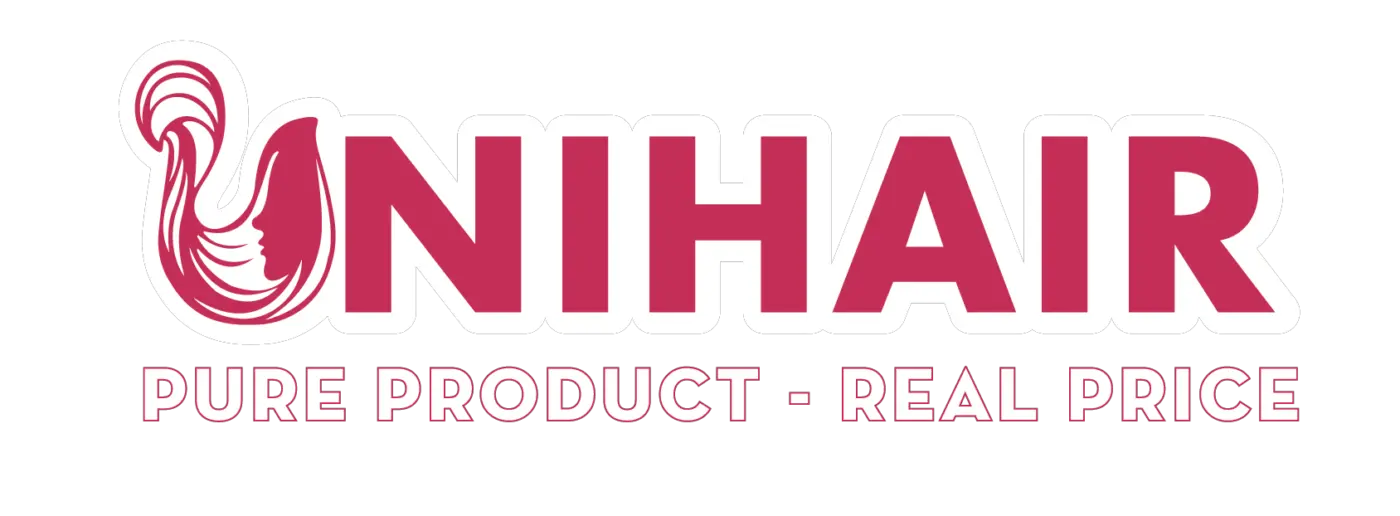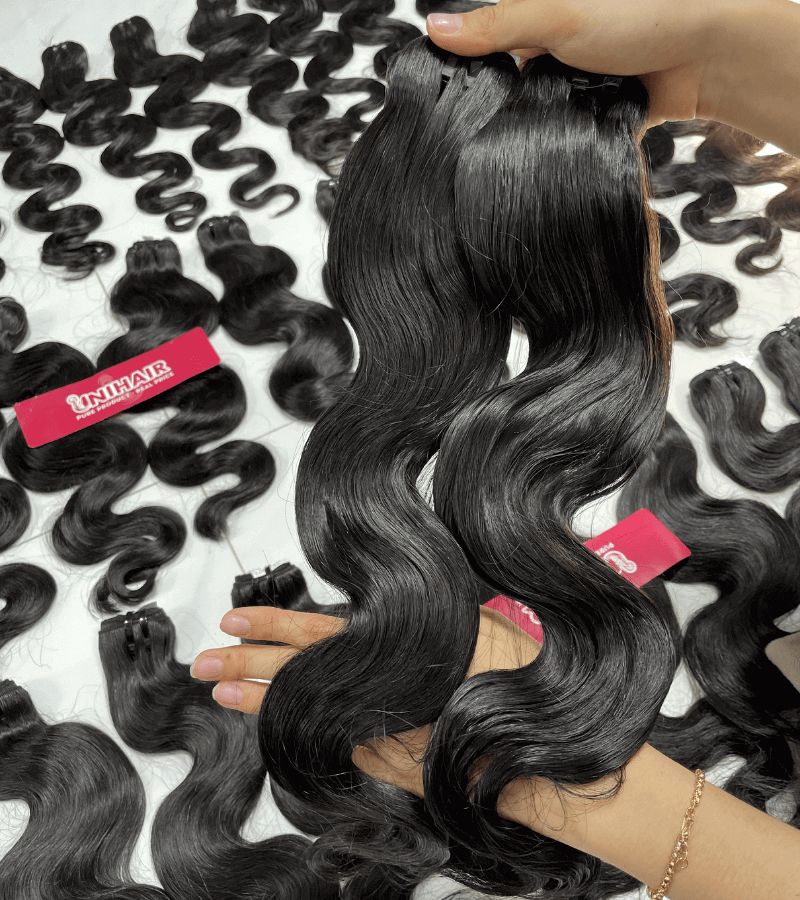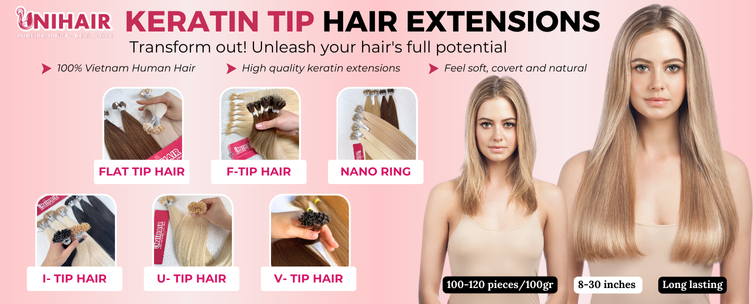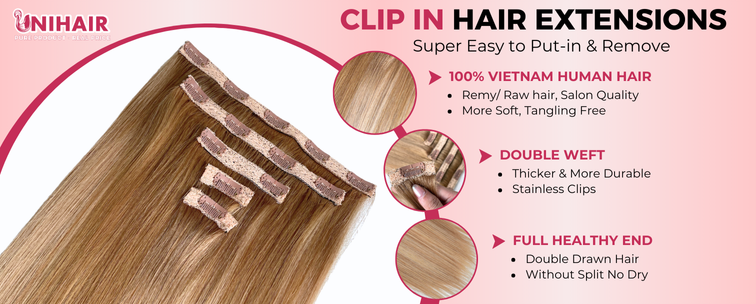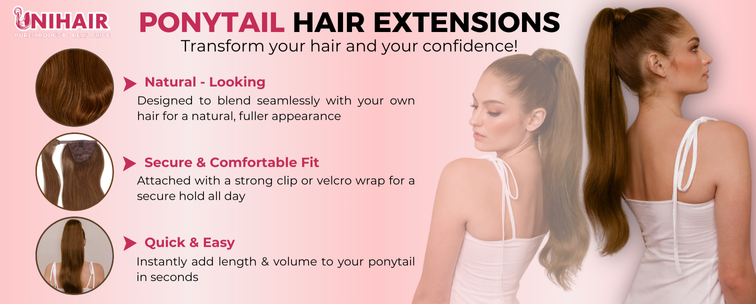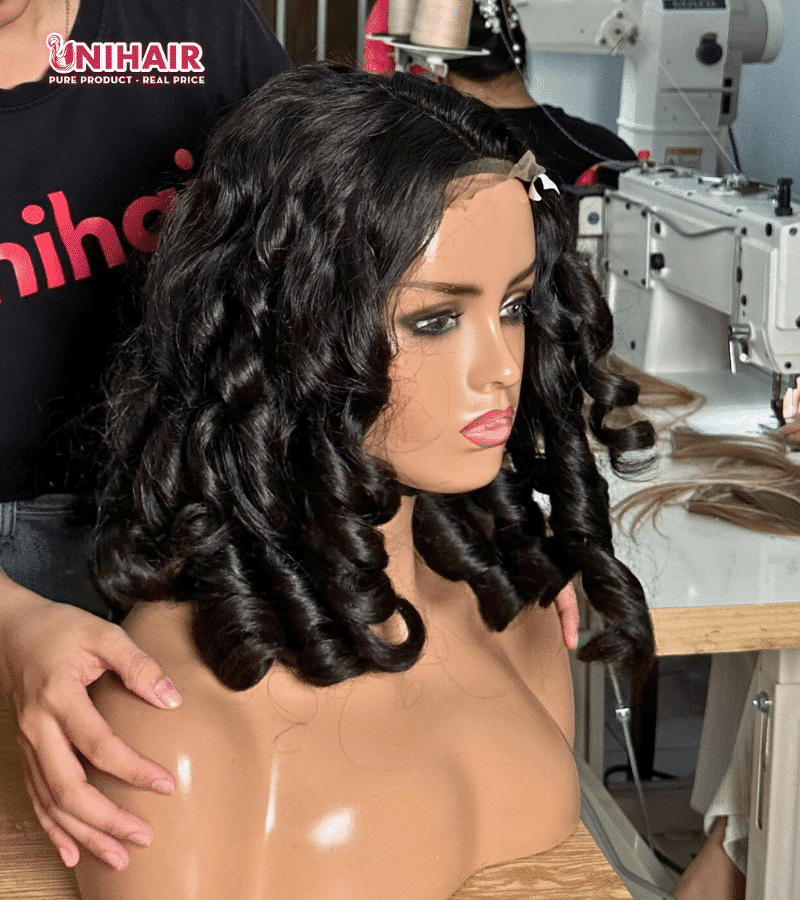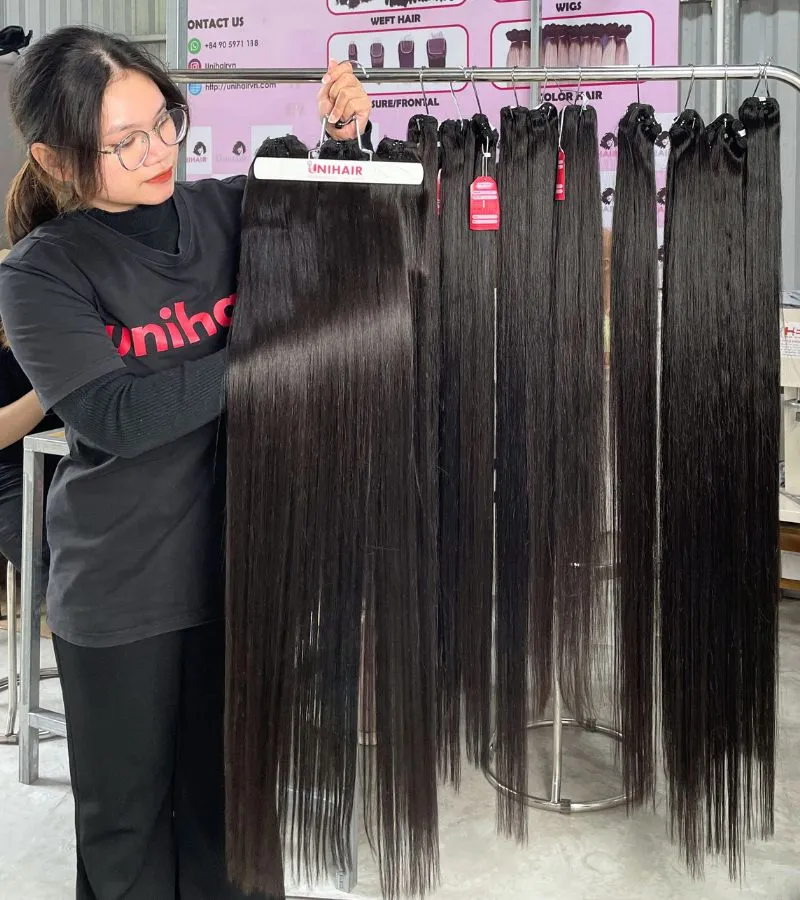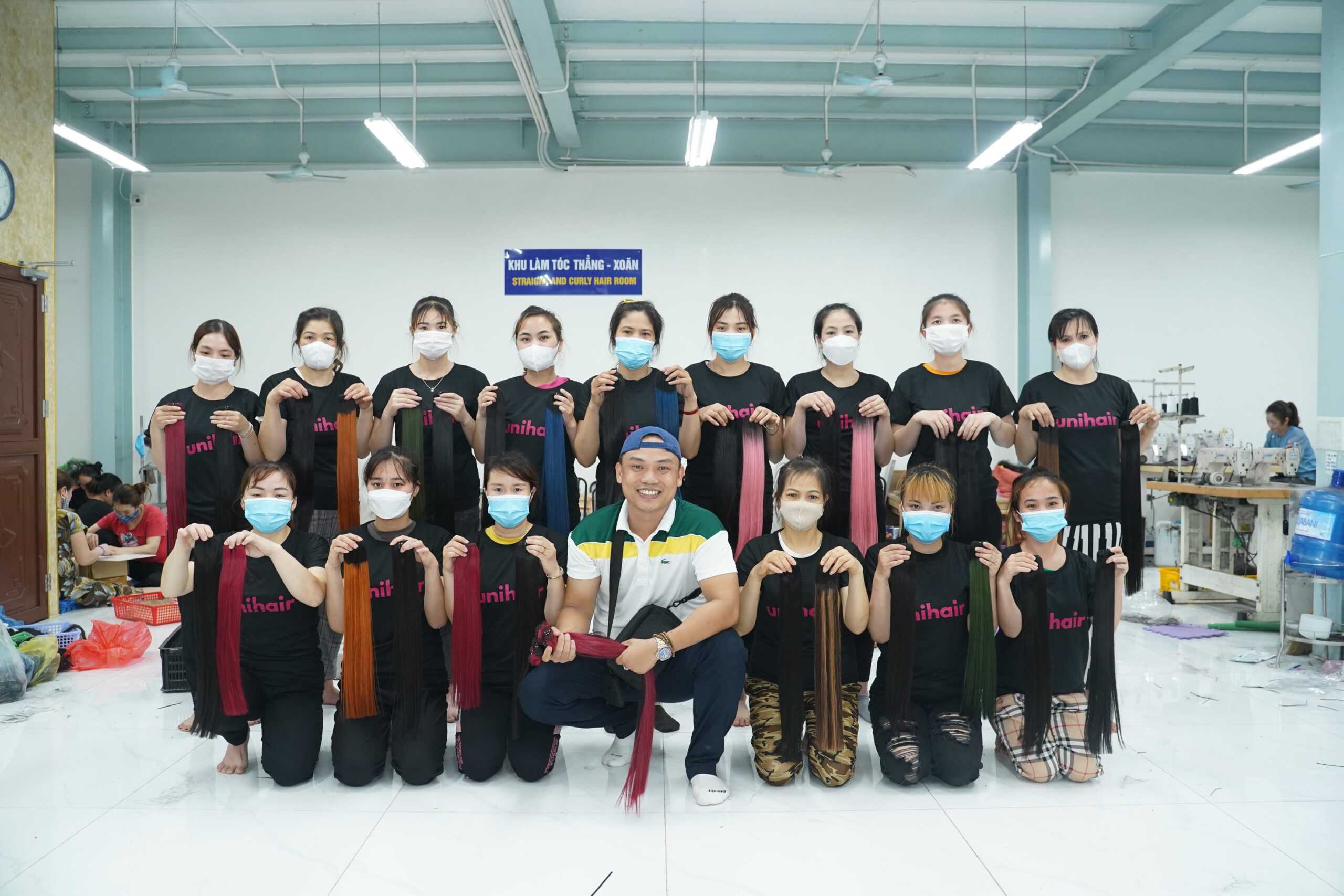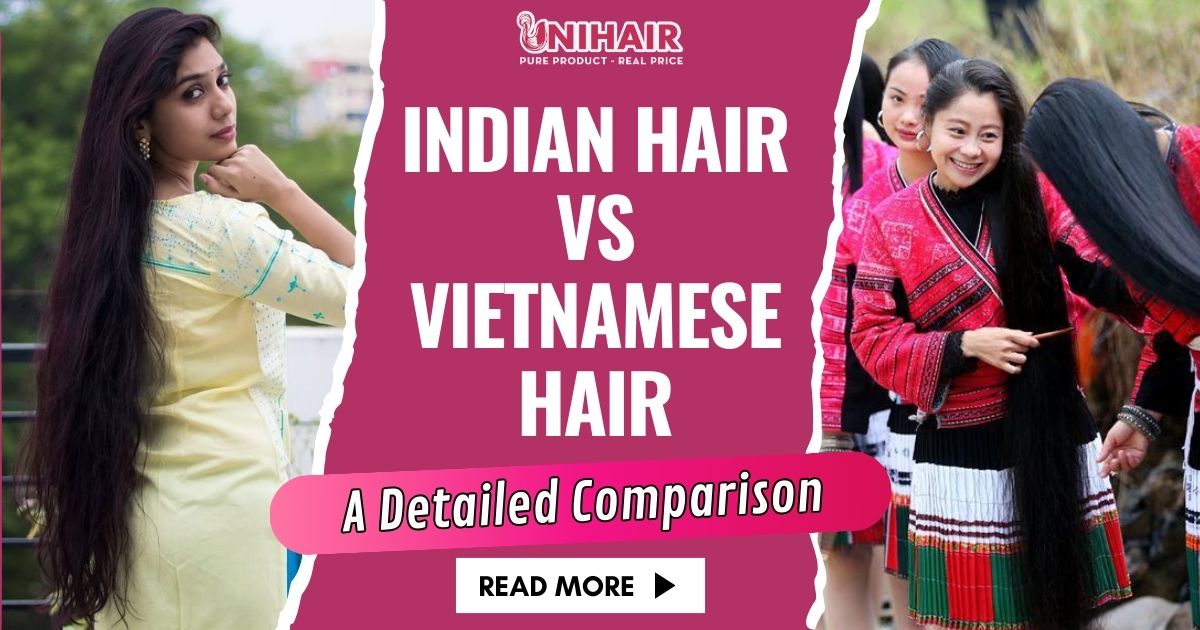Indian Hair vs Vietnamese Hair: A Detailed Comparison
Indian and Vietnamese hair extensions are among the most popular choices on the market. But what are the differences between Indian hair vs Vietnamese hair in terms of texture, quality, cost, and overall performance? In this guide, you’ll find an in-depth comparison between these two to help you determine which is the best fit for your needs.
What Is Indian Hair?
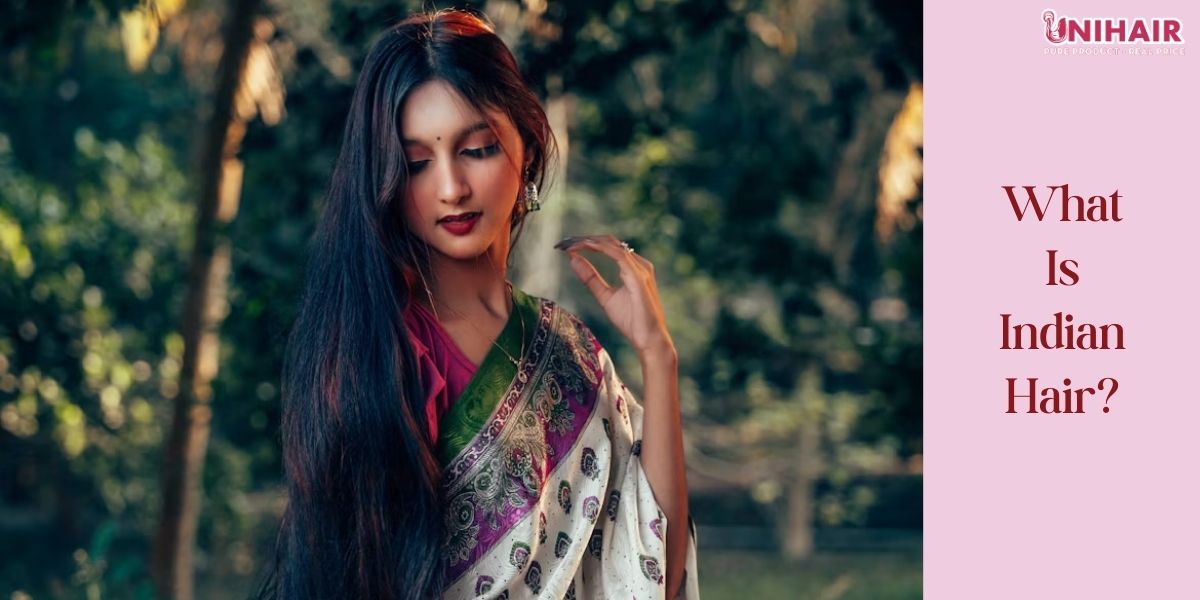
Indian hair is collected from individuals of Indian heritage and generally comes from two primary sources: temples and waste hair collection.
- Temple hair: This type originates from religious sites where devotees shave their heads as part of spiritual offerings. The hair is then collected and sold to manufacturers. Temple hair is usually classified as remy, though not always virgin.
- Collected hair waste: Often referred to as hair ball, this category includes hair that is gathered from various sources like salon floors or brushes. It typically falls under the non-remy and non-virgin categories.
Compared to Vietnamese hair, Indian hair is less frequently found in its virgin form and is more commonly available as remy or non-remy hair.
What Is Vietnamese Hair?
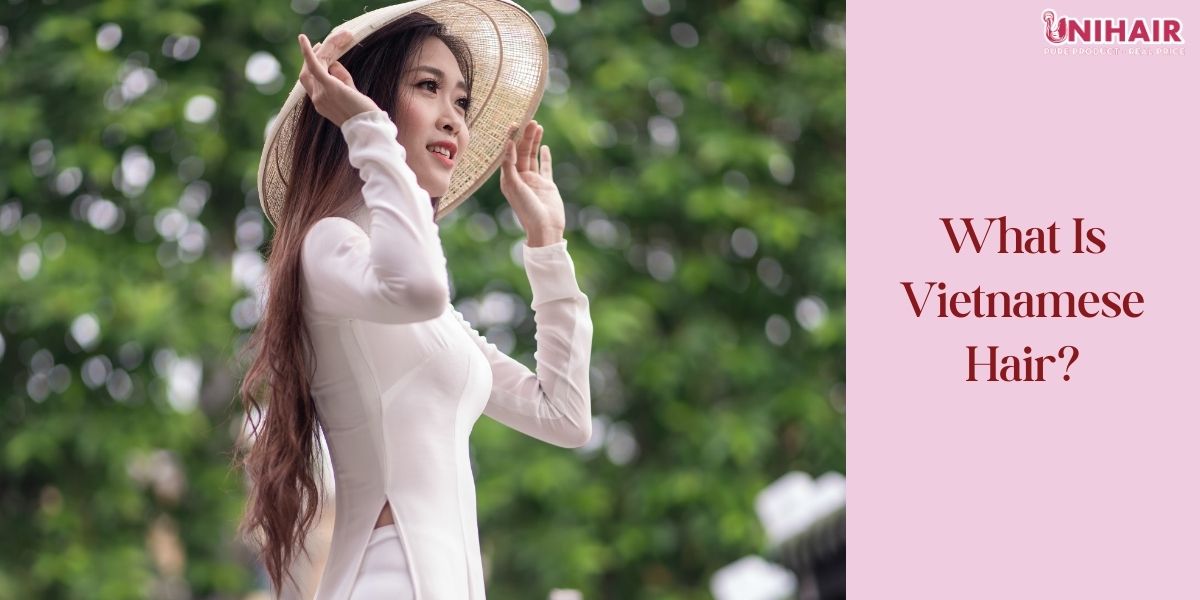
Vietnamese hair is widely recognized for its superior quality and unique properties. Sourced entirely from Vietnamese individuals, raw Vietnamese hair is often praised by customers for its softness, smooth texture, and impressive longevity.
Raw Vietnamese hair comes in two primary types, categorized by the number of donors and the quality: virgin hair and remy hair.
- Vietnamese virgin hair: Collected from a single donor, this type of hair is completely natural and untreated. Its uniformity and purity make it especially suitable for chemical processing, such as bleaching and restyling.
- Vietnamese remy hair: Sourced from multiple donors, remy hair remains unprocessed and maintains a consistent cuticle direction, which helps prevent tangling and ensures a high-quality appearance.
While non-remy hair is available on the market, it is generally considered lower in quality. As a result, most Vietnamese hair vendors avoid offering non-remy hair to maintain high standards.
Similarities Between Indian Hair vs Vietnamese Hair
Indian hair vs Vietnamese hair share several qualities that make them top choices in the global hair market. These shared traits include:
Natural hair color
A simple way to distinguish both Vietnamese and Indian hair is by their deep, dark hues. Typically, the hair ranges from deep brown to jet black. These natural shades make styling with real human hair more seamless for professionals.
Additionally, the dark base allows for easy blending with other shades, providing a natural and realistic appearance for clients.
Both raw Vietnamese hair vs raw Indian hair can also be dyed to suit personal preferences. As long as the hair is of high quality, it can be lightened or colored into even the most challenging tones.
Styling flexibility
Another major benefit of both Vietnamese and Indian hair is their excellent versatility. The hair can be dyed, curled, straightened, or styled freely, behaving much like natural hair.
Because of this, customers often find that these extensions integrate well with their own hair, offering a seamless look.
This level of flexibility is a key advantage over more heavily processed alternatives, like some Chinese hair, which often loses its ability to be restyled once factory-treated.
Differences Between Indian Hair Vs Vietnamese Hair
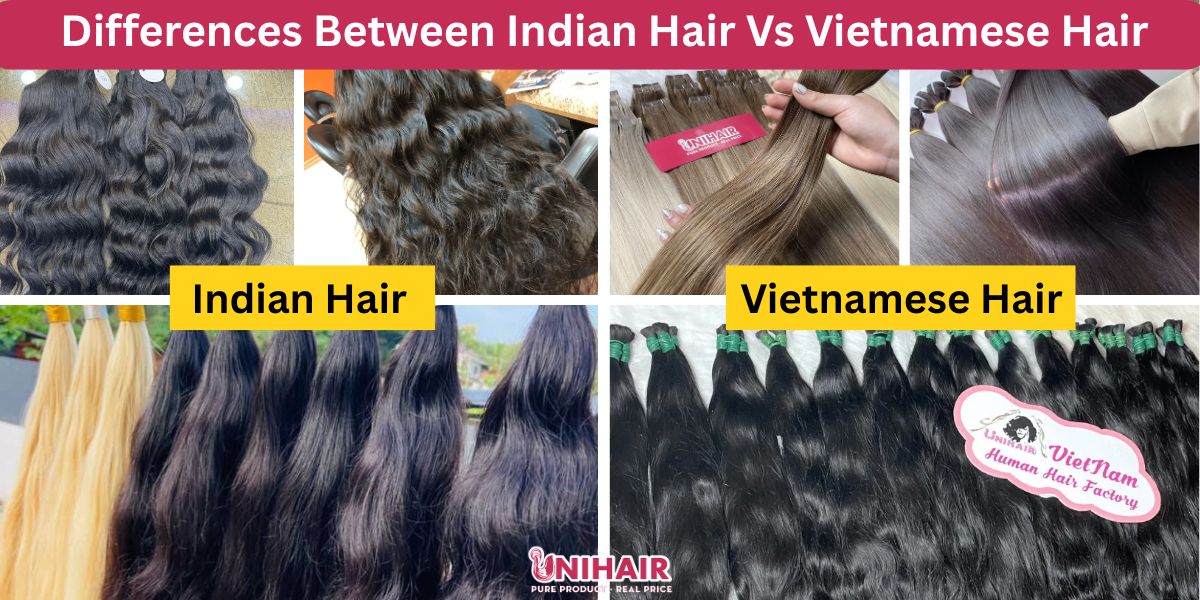
While Indian hair vs Vietnamese hair extensions share some similarities, they also have distinct differences that make each unique, particularly in origin, quality, texture, durability, scent, and price.
Origin Indian hair vs Vietnamese hair
The origins of these two hair types vary significantly. Indian hair is collected from a wide range of locations across the country. In most cases, the sourcing process lacks strict quality control, and hair may be gathered from various regions without selective screening.
On the other hand, Vietnamese hair is sourced mainly from women who live in Vietnam’s rural mountainous areas. This controlled sourcing from a specific demographic ensures consistency in both quality and health of the hair.
Quality Indian hair vs Vietnamese hair
Vietnamese hair is often considered superior in quality compared to Indian hair. This can be attributed to the careful donor selection process and the natural hair care practices common among Vietnamese women. Their hair is typically well-maintained with herbal products and minimal chemical exposure, preserving its softness, strength, and overall health.
In contrast, Indian hair often falls into the remy or non-remy category. These types usually require more processing, including chemical treatments and heat styling, to achieve a uniform appearance, which can diminish the hair’s original quality.
Durability Vietnamese hair vs Indian hair
Another notable characteristic of Vietnamese hair is its exceptional durability. Thanks to its high quality and minimal processing, raw Vietnamese hair can last between 3 to 5 years with proper care.
Indian hair, depending on its type and condition, generally lasts around 1 to 3 years. Hair collected from random sources or classified as non-remy may have an even shorter lifespan due to heavier processing and lower-quality strands.
Texture and feel
The texture of Vietnamese and Indian hair is another clear differentiator. Vietnamese hair is known for its silky, smooth, and naturally shiny texture, which provides a soft and luxurious feel.
Indian hair, particularly that processed in factories, tends to be thicker and coarser, offering a fuller look that some clients may prefer.
Despite these differences, both types blend well with natural hair and can create a seamless, realistic appearance when styled correctly.
Odor Indian hair vs Vietnamese hair
Scent can also be a telling factor. Vietnamese hair typically has a light, herbal aroma due to natural hair care practices and minimal processing.
In contrast, Indian hair often has a stronger scent caused by chemical treatments and the use of perfumed products during processing. These are used to mask the varying natural odors resulting from diverse sourcing practices.
Price Indian hair vs Vietnamese hair
When it comes to Indian hair vs Vietnamese hair price, Vietnamese hair is generally more expensive due to its premium quality, uniform texture, and longer lifespan. Prices reflect the meticulous sourcing process and the healthy condition of the hair.
Indian hair is typically more affordable, with raw hair sometimes costing only a few dozen dollars per kilogram. However, price often correlates with quality, and cheaper hair may require more maintenance and may not last as long.
While budget is always a consideration, investing in higher-quality hairlike Vietnamese extensions can save money over time thanks to reduced upkeep and longer wear.
Indian Hair Vs Vietnamese Hair: Which One Is Better?
When comparing Indian hair vs Vietnamese hair, it’s important to understand that each type comes with its own unique benefits and limitations—there’s no universal answer to which is better. The ideal choice depends on your specific goals, whether personal or business-related.
If you’re seeking premium-quality hair that is long-lasting, easy to style, and maintains a natural shine, Vietnamese hair is an excellent option. It is especially recommended for those launching or scaling a hair business. Vietnamese hair suppliers are well-regarded for their consistent quality, bulk production capacity, and strict quality control. However, sourcing hair from Vietnam may require a bit more lead time, with production typically taking 5 to 10 days.
Conversely, Indian hair is a great alternative for buyers who prioritize affordability and faster shipping. It’s more budget-friendly, making it accessible for many markets. Still, it’s essential to pay attention to the grade—especially when dealing with Remy or non-Remy Indian hair, which can vary significantly in quality.
In summary, the best choice in the Indian hair vs Vietnamese hair debate depends on what matters most to you: premium quality and durability, or affordability and convenience. Align your decision with your budget, timeline, and customer expectations for the best outcome.
Best Vietnamese Hair Vendors

Unihairvn
Unihairvn is a reputable global supplier of human hair extensions, recognized for its commitment to quality and ethical practices. The company serves customers across the U.S., Europe, Asia, Africa, and Central America, earning trust through product consistency and transparent business operations.
- Top-tier Vietnamese hair: All extensions are made from 100% Vietnamese human hair with cuticles intact, ensuring a soft, smooth, and natural texture. There are no synthetic blends or harsh chemical processes involved.
- In-house production: With their own manufacturing facilities and warehouses, Unihairvn can accommodate both bulk and customized orders efficiently.
- Wholesale pricing: By selling directly from the factory, Unihairvn eliminates extra costs, offering competitive prices without compromising product quality.
For anyone looking for premium Vietnamese hair, Unihairvn is a reliable and trustworthy vendor.
8Hair
8Hair focuses on premium raw Vietnamese hair, sourced directly from local donors. Their minimal processing approach helps preserve the natural shine, softness, and strength of the hair.
- Dependable quality: A strict quality control system ensures product uniformity and reliable stock, which has helped 8Hair build a loyal customer base.
- Affordable wholesale options: Thanks to their factory-direct model, 8Hair offers prices that are up to 40% lower than many competitors, making them a popular supplier, particularly among wholesale buyers in California.
KFHair
With more than 15 years of experience, KFHair is one of the largest and most trusted hair suppliers in Vietnam.
- Ethical sourcing: Their hair is collected using natural methods from Vietnamese women and ethnic minorities, ensuring high-grade virgin and remy hair that is free from chemical treatment.
- International customer base: KFHair exports globally, with a strong presence in the U.S., especially among retailers and distributors in Florida.
- Excellent value: KFHair stands out for offering premium-quality hair at competitive prices, making it a preferred supplier for buyers seeking durability and cost-effectiveness.
Best Indian Hair Vendors

1 Hair Stop
Among the many hair factories in India, 1 Hair Stop is a well-known name with a solid reputation. Their products are of moderate quality, but their customer service is often praised for being responsive and reliable.
With over a decade of experience in the hair extension industry, 1 Hair Stop specializes in a variety of clip-in extensions, including straight, wavy, and curly styles – all made from 100% remy human hair.
Their primary markets include India and Europe, catering to customers who appreciate the convenience of clip-in extensions for quick and easy styling.
Indian Mermaid Hair Extensions
Indian Mermaid Hair Extensions is recognized as one of the top suppliers of raw Indian hair, offering high-quality products at competitive prices. The company mainly focuses on human hair wigs made from hair ethically sourced from Indian temples.
Their clientele includes wholesale buyers, salons, retailers, and individual consumers. They provide 100% pure remy hair and carry a variety of wig styles, including Full Lace Wigs, Half Lace Wigs, Gents’ Short Wigs, and custom-made options.
Chennai Hair Factory
As one of the early players in India’s hair manufacturing industry, Chennai Hair Factory has been in operation for over nine years. In the past three years, they’ve expanded to serve a global customer base as a wholesale hair vendor.
Their product range includes synthetic wigs, human hair extensions, drawn hair, and other hair products, catering to both domestic and international clients.
Final Thought
In general, both Indian hair vs Vietnamese hair have distinct advantages and disadvantages. Choosing between the two largely comes down to your individual preferences, styling needs, and budget. It’s essential to do thorough research and pick the type of hair that aligns best with your desired look and personal requirements.
